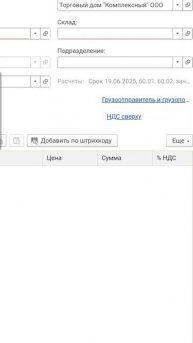Iterating On A Python List | Python 4 You | Lecture 112
Unlocking the Power of Iterating on Lists in Python
Iteration is a fundamental concept in programming, and Python makes it exceptionally easy to work with lists. Lists, as one of the most versatile and commonly used data structures in Python, often require you to traverse their elements to perform various tasks.
Why Iteration Is Essential
Iteration allows you to access and manipulate each element in a list, making it a crucial part of many programming tasks. Whether you're searching for specific elements, applying transformations, or performing computations, iteration is the key to success. In Python, there are several methods for iterating through lists, each suited for different situations and requirements.
Using a for Loop
The most common and straightforward method for iterating over a list in Python is by using a for loop. This loop is designed to traverse each item in the list, performing a specific operation for each element.
Here's an example of a simple for loop in Python:
my_list = [1, 2, 3, 4, 5]
for item in my_list:
# Perform some operation on 'item'
print(item)
In this case, the loop iterates through each element in my_list and prints it to the console. You can replace the print statement with any operation or logic that you want to apply to each item in the list.
Iterating with List Comprehensions
List comprehensions offer a concise and elegant way to perform iteration along with an operation on each element in the list. They are ideal for creating new lists by applying an expression to each item.
Here's an example that uses a list comprehension to create a new list containing the squares of the elements in an existing list:
original_list = [1, 2, 3, 4, 5]
squared_list = [x ** 2 for x in original_list]
List comprehensions allow you to express your intent more clearly and with less code, making them a preferred choice for many Python developers.
Enumerating Lists
Sometimes, you may need to keep track of the index of the current item during iteration. Python provides the enumerate function for this purpose. It returns both the index and the element, allowing you to access and manipulate the items more effectively.
Here's an example of enumerating a list:
my_list = ['apple', 'banana', 'cherry']
for index, item in enumerate(my_list):
print(f"Index {index}: {item}")
Using enumerate simplifies tasks that require both the index and the element, such as updating specific items in the list.
Iterating in Reverse
Occasionally, you may need to traverse a list in reverse order. Python offers two ways to achieve this: using a negative index with a for loop and the reversed function.
Negative Indexing with a for Loop:
By using a for loop with a negative index, you can iterate over the list in reverse order. Here's an example:
my_list = [1, 2, 3, 4, 5]
for i in range(len(my_list) - 1, -1, -1):
item = my_list[i]
print(item)
Using the reversed Function:
The reversed function returns a reverse iterator, allowing you to iterate through the list's elements in reverse order more intuitively:
my_list = [1, 2, 3, 4, 5]
for item in reversed(my_list):
print(item)
The choice between these methods depends on your specific requirements and coding preferences.
Iterating with While Loops
While loops provide an alternative method for iterating over lists. They continue iterating as long as a specified condition is met. This can be useful when you need more complex logic to determine when to stop the iteration.
Here's an example of iterating through a list with a while loop:
my_list = [1, 2, 3, 4, 5]
index = 0
while index less than len(my_list):
item = my_list[index]
print(item)
index += 1
While loops can be beneficial when you need to implement conditional iteration based on dynamic criteria.
Handling Lists of Lists
In Python, lists can contain other lists, leading to multi-dimensional lists. When iterating over such lists, you often need nested loops to access the inner lists' elements.
Here's an example of iterating over a list of lists:
matrix = [[1, 2, 3], [4, 5, 6], [7, 8, 9]]
for row in matrix:
for item in row:
print(item)
Summary
Iteration is a fundamental concept in Python, and lists are among the most commonly iterated data structures. Whether you're performing basic traversal, enumerating items, iterating in reverse, or handling multi-dimensional lists. By mastering the art of iteration on lists, you can efficiently work with collections of data, enabling you to build powerful and versatile Python programs.#python4 #pythontutorial #pythonprogramming #python3 #pythonforbeginners #pythonlectures #pythonprograms #pythonlatest #rehanblogger #python4you #pythonlatestversion #pythonlatestversion Learn python3.12.0 and latest version of python3.13. If you are searching for python3.13.0 lessons, you are at the right place as this course will be very helpful for python learners or python beginners.
Видео Iterating On A Python List | Python 4 You | Lecture 112 автора Молодежный Python-комьюнити
Видео Iterating On A Python List | Python 4 You | Lecture 112 автора Молодежный Python-комьюнити
Информация
2 декабря 2023 г. 5:53:29
00:01:33
Похожие видео





















